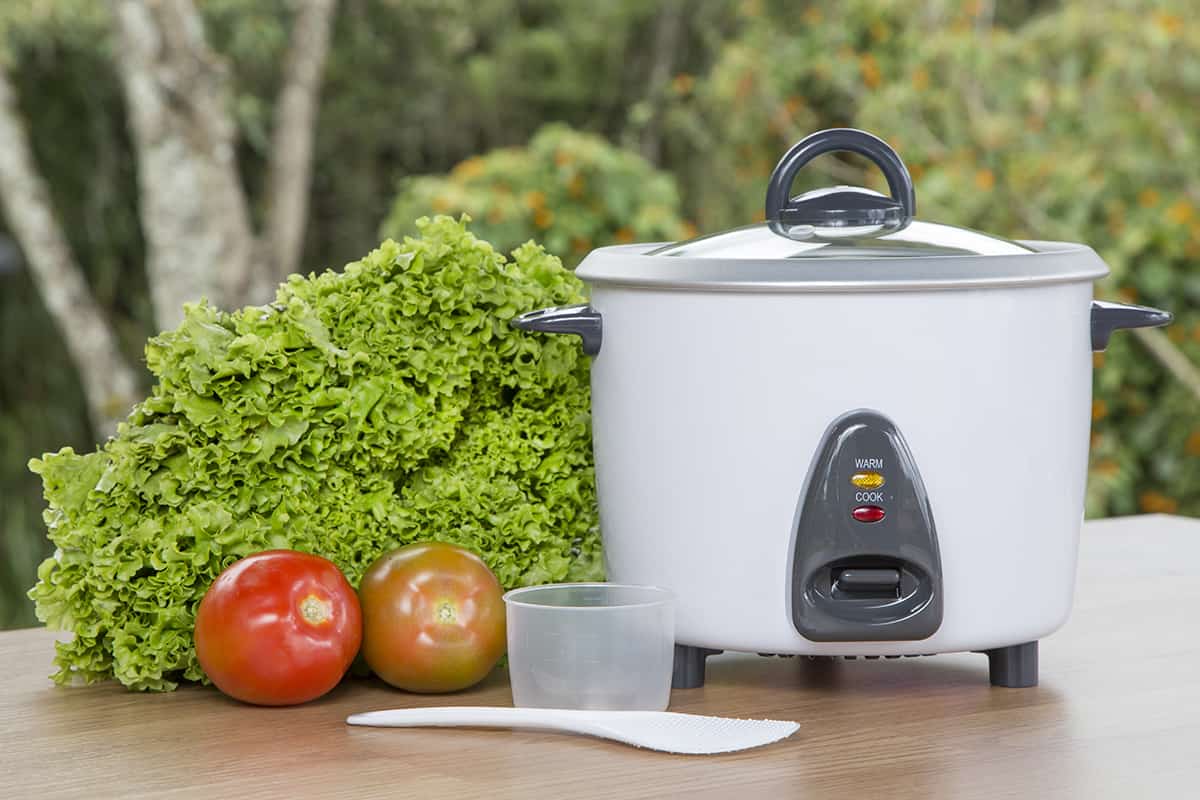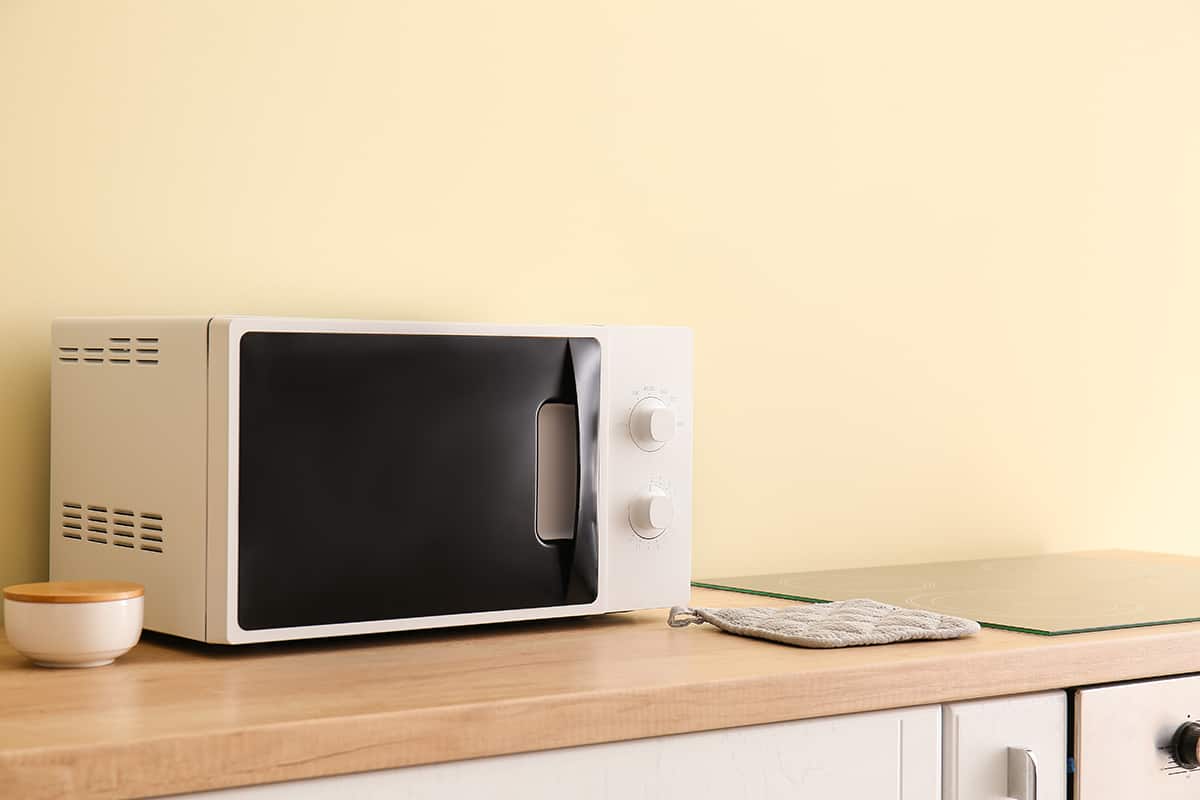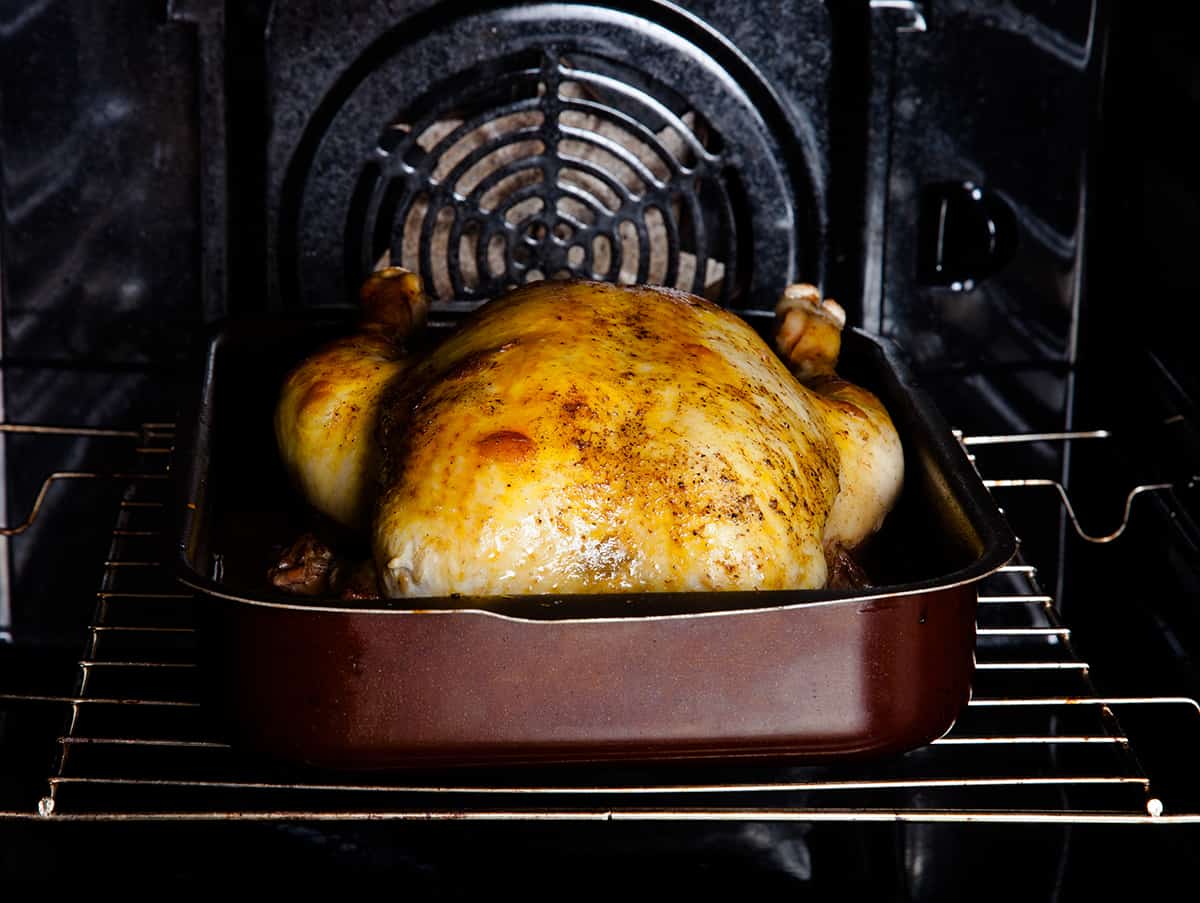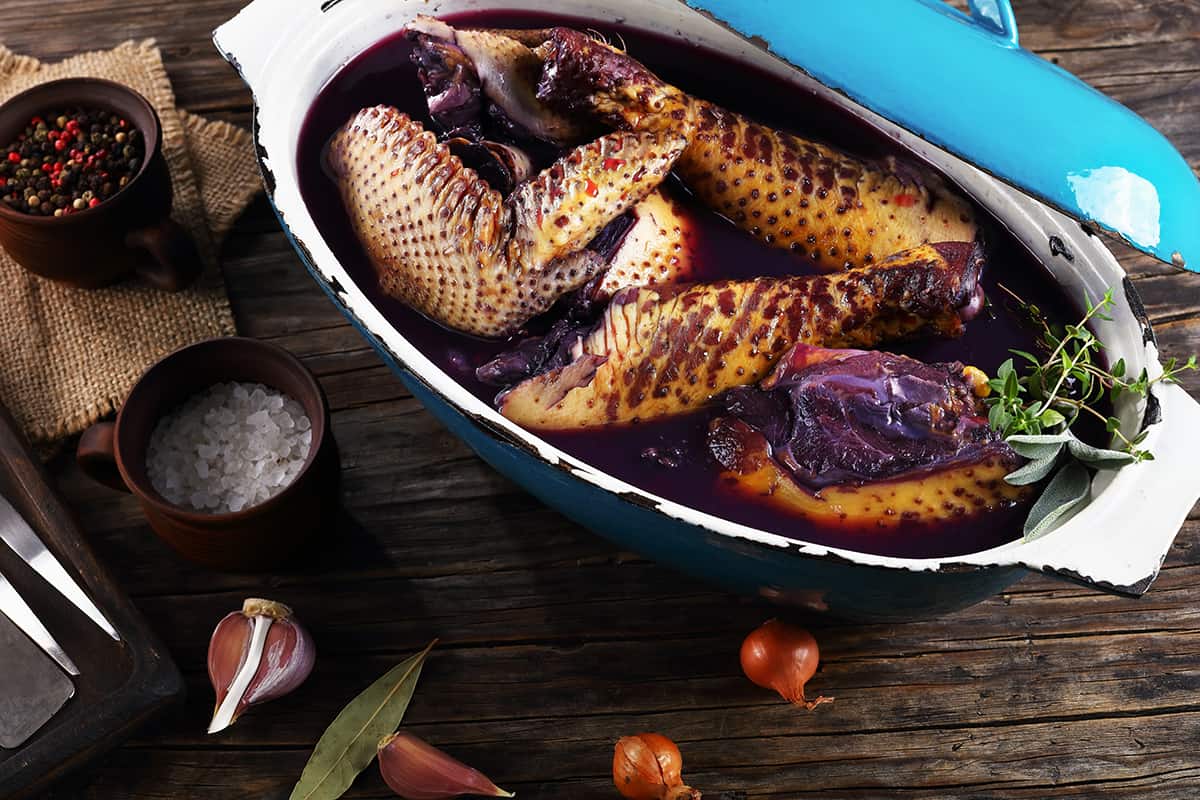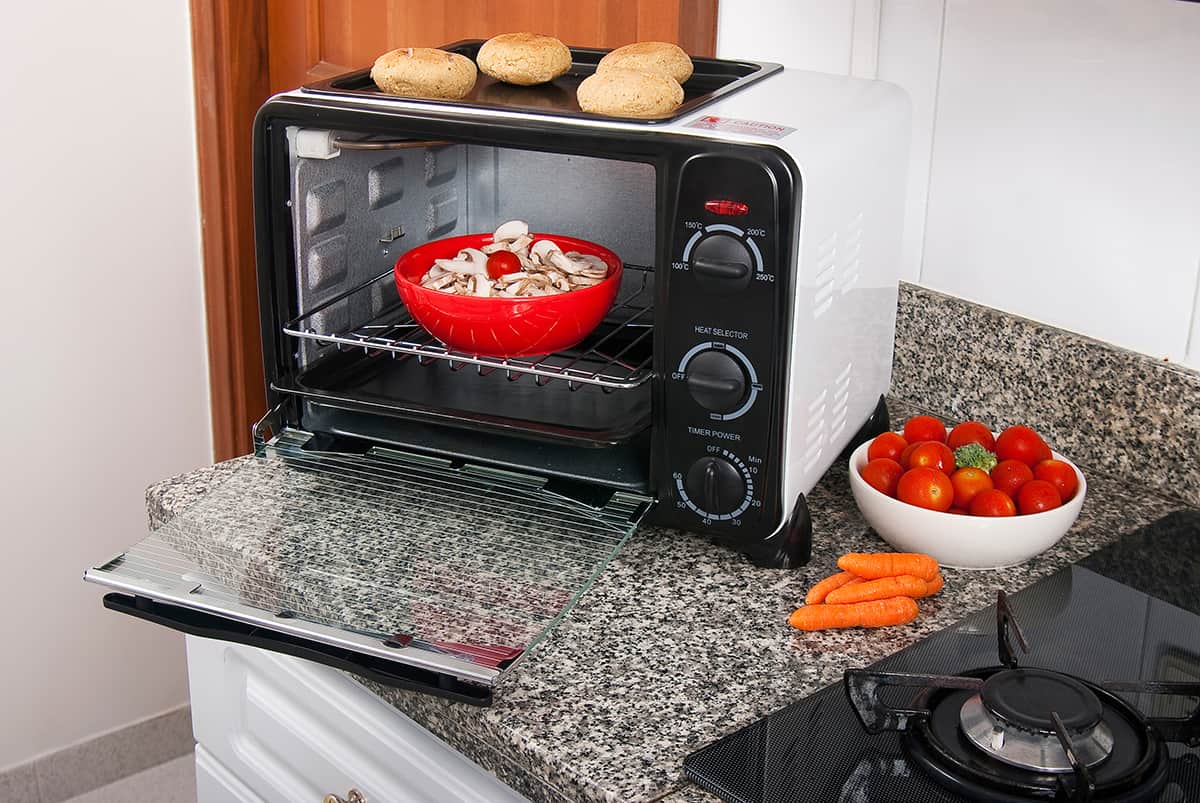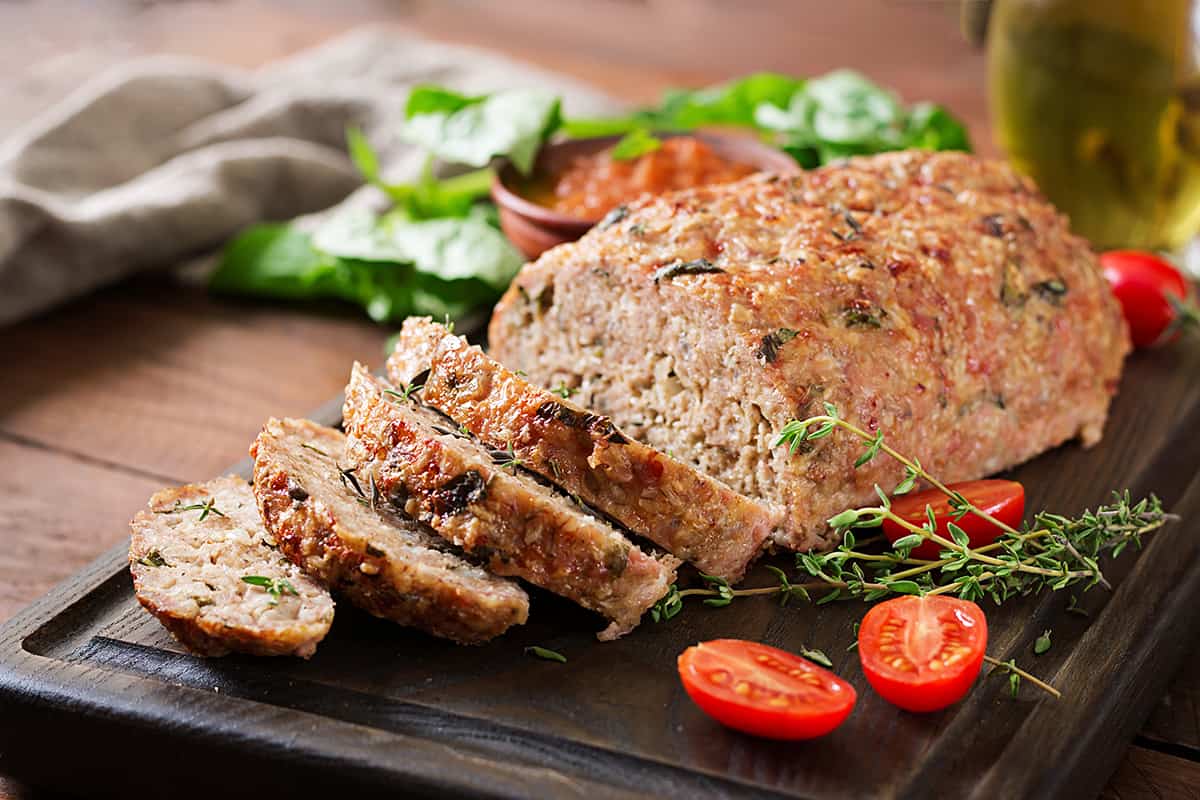Rice cookers are handy appliances that consistently deliver perfectly cooked rice, turning a task that often vexs cooks into a nearly foolproof operation. But have you ever stopped to wonder how these marvels of modern kitchenware know precisely when to stop cooking?
Rice cookers primarily use temperature sensors. Once all the water is absorbed or evaporated, there’s a noticeable temperature increase. The cooker detects this change and switches off or to a ‘keep warm’ mode.
This article delves deep into the mechanics of rice cookers and the sophisticated technology that makes them tick.
Basic Components of a Rice Cooker
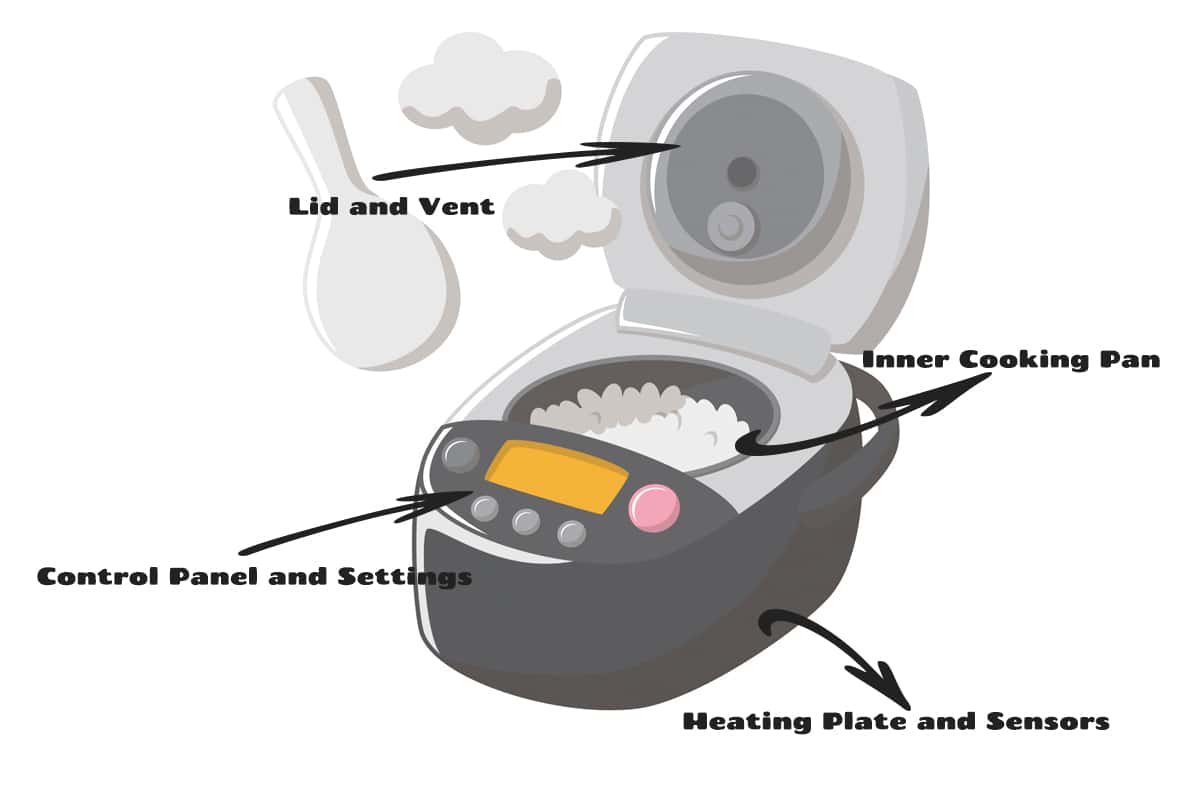
To understand how a rice cooker works, we first have to get a feel for its components, of which there are many.
1. Inner Cooking Pan
The inner cooking pan, often removable for easy cleaning, is where the rice and water sit during the cooking process. Made from materials like non-stick coated aluminum or stainless steel, it’s designed for even heat distribution. The measurements on the side of the pan help users gauge the correct water-to-rice ratio to produce perfectly fluffy rice every time.
2. Heating Plate and Sensors
At the base of the cooker, the heating plate generates the necessary heat to cook the rice. This plate works in tandem with built-in sensors that monitor the cooking process. These sensors, especially the temperature sensor, help in determining when the rice is ready.
3. Control Panel and Settings
The control panel is the rice cooker’s operational hub. Here, you’ll find buttons or dials for various cooking modes—white rice, brown rice, quick cook, and sometimes even modes for porridge or steaming. LED displays or indicator lights notify users of the cooking status, and some advanced models might even provide a countdown timer.
4. Lid and Vent
The lid of the rice cooker serves multiple purposes. Primarily, it traps heat and steam to help the rice cook uniformly. Many lids have a vent or steam hole, which allows excess steam to escape, preventing overflow or boil-overs. Some rice cookers feature a detachable inner lid for easy cleanup.
How a Rice Cooker Cooks Rice
While simple in operation, rice cookers employ a symphony of scientific principles and technology to give you that perfectly cooked batch of rice.
The Water-to-Rice Ratio
Every type of rice, be it long grain, short grain, or brown rice, has an ideal water-to-rice ratio. This ratio is critical to ensure that the rice is neither too dry nor too soggy. The amount of water affects the duration and quality of the cooking process.
Heating and Boiling
Once the cooker is turned on, the heating plate at the base begins to warm up, transferring this heat to the water and rice in the inner cooking pan. As the temperature rises, the water starts boiling. This boiling water cooks the rice, as the grains absorb both the heat and the water.
Steaming Process
After the water reaches its boiling point, it turns into steam. Now, the rice enters the steaming process. The trapped steam in the cooker continues to cook the rice. This phase promotes the separation and fluffing of the individual rice grains.
Temperature Monitoring and the Shift
The brilliance of a rice cooker lies in its ability to detect when the rice is done. As the rice absorbs all the water, there’s a slight yet significant rise in temperature. The cooker’s thermal sensors detect this change and signal that the rice is fully cooked.
Keep Warm Function
Many rice cookers come with a ‘keep warm’ function. Once the cooking process is complete, this feature keeps the rice at a warm and fresh temperature without overcooking.
Rice Varieties and Their Impact on Cooking
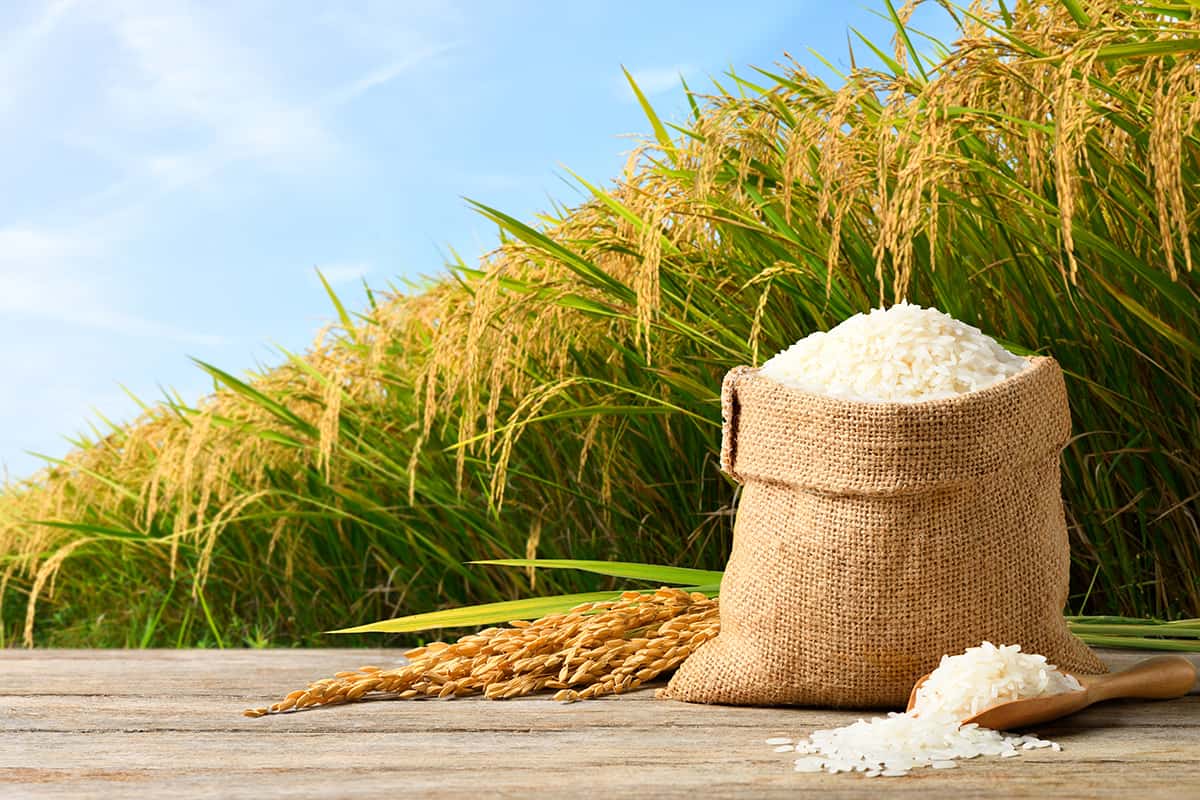
Rice is more than just a staple food; it’s a culinary universe of its own. Each variety offers its unique flavor, texture, and cooking requirements.
White Rice vs. Brown Rice
The primary distinction between white and brown rice is the milling process. While white rice has its husk, bran, and germ removed, brown rice retains its bran layer, giving it a nuttier flavor and chewier texture.
White rice typically requires a 2:1 water-to-rice ratio, meaning two cups of water for every cup of rice. It cooks within 15-20 minutes in a standard rice cooker. On the other hand, brown rice demands more water, often a 2.5:1 ratio. Due to its dense nature, brown rice takes a longer time, approximately 45-50 minutes, to cook fully.
Long Grain vs. Short Grain
The length of the grain influences the texture after cooking. Long grain rice, like Basmati or Jasmine, remains separate and is often fluffy. In contrast, short grain rice, such as sushi rice, becomes sticky and clumps together.
Long grain rice usually adheres to a 1.75:1 water-to-rice ratio and takes about 15-20 minutes to cook. Short grain rice, often used for sushi, requires a slightly higher water content, usually a 2:1 ratio to produce a stickier texture. Expect it to cook within 20-25 minutes.
Wild Rice
Although not true rice but a type of grass seed, wild rice stands out with its unique appearance and taste. It’s dark, chewy, and has a rich, nutty flavor profile.
For optimal results, a 3:1 water-to-rice ratio is recommended. Given its tougher exterior, wild rice needs a longer cooking span, typically 45-55 minutes, to reach its desired chewy consistency.
Aromatic Rice
Rice like Basmati and Jasmine fall under the category of aromatic rice due to their distinctive fragrant qualities. They are popular in various cuisines and have specific cooking needs.
For aromatic varieties, a 1.5:1 water-to-rice ratio brings out its best texture, and it usually cooks within 15-18 minutes.
Specialty and Heirloom Varieties
Many regions worldwide have their specialty or heirloom rice varieties, like the black rice of Asia or the red rice of Bhutan. These are often less common but provide unique textures and flavors.
The likes of black or red rice often require a 2:1 water-to-rice ratio. Being dense, their cooking duration extends to about 30-40 minutes. However, always refer to specific package instructions, as heirloom varieties can sometimes deviate from standard guidelines.
Other Uses of Rice Cookers
Rice cookers offer versatility that extends far beyond their name. Here, we’ll briefly cover the various types of foods you can make with your handy rice cooker.
Steaming Vegetables and Meats
- Fill the main pot with the recommended amount of water.
- Place your washed and cut vegetables or thinly sliced meats in the steaming tray.
- Set the cooker to the ‘cook’ setting. Most vegetables will be perfectly steamed within 10-15 minutes.
Making Breakfast Items
Oatmeal and Porridge
- Add your oats and milk (or water) in a 1:4 ratio.
- Add sweeteners or flavorings as desired, like cinnamon or honey.
- Use the regular cooking cycle, and within 20 minutes, a warm breakfast awaits.
Frittatas and Pancakes
- Mix your frittata or pancake ingredients in a bowl.
- Pour the mix into a greased rice cooker.
- Run two regular rice cooking cycles or until the center sets.
Soups and Stews
- Add all your ingredients, ensuring liquids don’t exceed 3/4 of the pot.
- Use the standard cooking cycle. For thicker stews, run it twice.
- Adjust seasonings and serve warm.
Cooking Quinoa, Couscous, and Other Grains
- For quinoa, use a 1:2 ratio of quinoa to water and cook for one standard cycle.
- For couscous, a 1:1.5 ratio with one cycle should suffice.
Making Desserts
Rice Cooker Cakes
- Mix your standard cake batter.
- Pour it into a greased rice cooker pot.
- Depending on the cooker’s capacity, you might need 2-3 cycles to bake fully.
Rice Pudding
- Combine rice, milk, sugar, and flavorings like vanilla or cinnamon.
- Cook for two cycles or until the mixture thickens to your liking.
